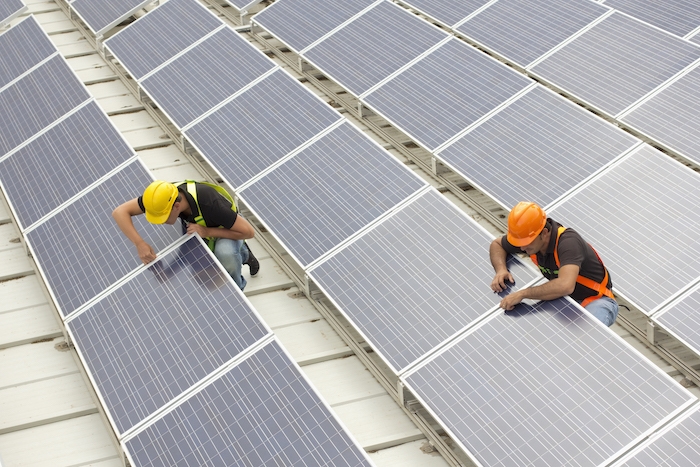
Features
Code File
Codes & Standards
Connection requirements for solar projects • Code File, April 2019
April 12, 2019 | By David Pilon
 Photo courtesy IHSA
Photo courtesy IHSAApril 12, 2019 – Section 64-112 of the CE Code tells us a utility interactive point of connection for a solar project must meet the requirements of the supply authority and Section 84, based on predetermined safety factors. So, even though most utilities (i.e. supply authorities) are not required to conform to Section 84, the installation must do so, as a minimum.
Meanwhile, a utility may have further requirements. Thus, it is important for electrical contractors to understand how the installation and connection of a solar project is a two-part process involving multiple jurisdictions. This may mean sending drawings to the utility, municipality and authority-having jurisdiction (AHJ) for review prior to starting the work. (Of course, contacting the local AHJ and becoming aware of local codes, utility standards and building code requirements is very important before starting any project.)
Section 84 addresses the need to ensure the customer’s power production equipment is suitable for interconnection with the supply authority system, so as to achieve synchronization without adverse effects on the interconnected system, and can disconnect immediately in the event of failure of any one phase of the supply source.
It also requires a disconnecting means from the supply authority, where the disconnect can be energized from both sides, as well as indicate whether it is open or closed. It must disconnect all electric power production sources from the supply authority system simultaneously. This means if the customer has more than one type of renewable power production, they must all be able to be disconnected with one means.
Once we deal with all of the safety equipment and labelling requirements, we need to look at how much solar we want to install. This will depend partly on utility regulations, utility capacity, the customer’s own equipment and service capacity and the location of the interactive point of connection. An electrical inspection of the installation will be based on comparing the available input from the utility with the equipment ratings and the interactive point of connection.
In the early days of solar energy, it was determined standard testing conditions (STC) of 1,000 W/m2 could be exceeded for three hours per day, if the irradiance and weather were above the STC requirements. This resulted in solar energy being considered a continuous load, even with an output of 0 W/m2 in the evening or during the night.
As for the location of the interactive point of connection, the designer needs to choose where to interconnect the two systems, based on the size for which they have space and capacity. Will it be a load-side or supply-side interconnection, in a rural location, on a commercial structure or at a residence, using micro-inverters or a DC system with one or more larger inverters?
For the average 100-A residential solar panel, the bus rating is generally 125 A. If there is access to the panel, then a load-side connection is possible, with a maximum continuous renewable output circuit at 40 A.
A supply-side connection could involve changing out the meter socket to a double lug socket rated for 200 A, while a 100-A panel is already fed off the system. Due to the ampacity of the bus and the lug size of the socket, a separate input with a utility disconnect could be located outside the dwelling unit, depending largely on the equipment ratings, space requirements, local AHJ, municipality and utility limitations on the amount of solar that can be installed in the location.
With this in mind, be sure to contact your local AHJ and utilities before planning or installing solar panels in any location.
David Pilon is an electrical inspector with SaskPower, the utility’s training co-ordinator for electrical inspectors and vice-chair of the Canadian Certified Electrical Inspector (CCEI) committee of the International Association of Electrical Inspectors (IAEI), Canadian section. He can be reached at dpilon@saskpower.com.
This column originally appeared in the April 2019 issue of Electrical Business magazine.
Print this page